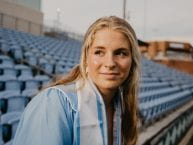This meeting with Dr. Schiffman at LREI was highly anticipated. Our group had rescheduled with Dr. Schiffman, once before. But when he arrived, I realized it was for real. I remember turning to Daniela the first time we heard Dr. Schoffman speak. At that time we both agreed at that moment, that he would be a perfect guest speaker for our class. Dr. Howard S. Schiffman is an international environmental lawyer whose passion is marine conservation laws and policy and dispute settlement regarding it. From 2010-2013 Dr. Schiffman was a Visiting Associate Professor of Environmental Conservation Education at New York University. When he was there, he taught Contemporary Environmental Debates and International Environmental Governance. I noticed that each time he began his presentation he started with a little story about himself and how he became interested in his field. When he was young, he and always been fascinated by marine life, but he had no idea how he would do something when he grew up in the same field. When he was in law school, one of his first assignments was to write a paper, and for his thesis, he reached back into his old childhood passion and wrote his essay on the conservation of whales in environmental law. Ever since then, he has mainly focused his career in environmental law.
Dr. Schiffman started off talking about the two big kinds of nets that take in the most bycatch. The first kind that he mentions is Long Lines. Although there three specific kinds of Long Lines, they all have a similar basic makeup. They have one thick line that can stretch out for several football fields. Then, attached to those lines, there are hundreds of vertical lines called snoods. These lines have baited hooks on them, much like regular fishing hooks. The first kind of long line that Dr. Schiffman talked about was called Pelagic long line. This Long Line adds buoys that float above the water, keeping it afloat, and weights hanging virtually to keep the line straight. The second kind of long line is Drifting long line. This is basically a pelagic line except it has buoys or weights and is allowed to freely float with the waves. The final long line is called a Demersal longline. This long line is basically the same as the rest except it is anchored to the ocean floor. These lines have little to no impact on ocean floors. However, because they have baited hooks, any animal that swims along could potentially eat the bait and get caught as bycatch. A big problem with these lines are the thousands of birds that drown trying to eat the bait. But now, they are trying to come up with hooks that will release bigger animals.
The Other type of nets that he talked about were trawls. There are three main types of trawl nets but they all have a similar structure and shape. These nets generally have a funnel or cone shape in order to trap the fish at one end while leaving a large open hole for them to get caught in. The nets are towed through the water by one or two boats, grabbing everything in it’s wake. The first kind of trawl is a pelagic trawl which is towed through open waters. The depth at which these nets are towed at can vary depending on what species are being targeted. This type of trawl net is generally much larger than the ones used at the ocean floor. The second type of trawl is the Bottom / Demersal Trawls. These have the same net shape except that they are at the towed along the bottom of the ocean, being dragged along by huge weights. These nets are a big problem because they pick up everything on the ocean floor, endangered or otherwise. They also pick up juvenile animals and without these juveniles the populations of the species will drop significantly. Bycatch in these situations is not preventable since the fished species live in close proximity with other species, such as deep sea coral that get pulled up in these nets with no chance of survival. These nets can do physical damage to the canyons that are deep down in the ocean.
Bottom trawls also ruin benthic ecosystems. These are ecosystems at the very bottom of the ocean. The weights dig into the ground and as they pass over the ocean floor, not only do they alter the benthic ecosystems, they displace large rocks and rework sediments. They also drag across the bottom of sandy and even muddy bottoms. When this occurs, it stirs up the bottom releasing chemicals into the water.
Dr. Schiffman explained to our class that if bycatch is not closely monitored, we could send species into extinction. This would have detrimental effects on the larger ecosystems. Every year, at least 7.3 million tons of marine life are caught as bycatch. In certain fisheries, the amount of bycatch is way more than the amount of fish they were supposed to catch. In or every shrimp caught by nets dragged behind trawls in the Gulf of Mexico, over four times its weight is bycatch. But he assured us that In the Northwest Atlantic Ocean Canada and the United States are avidly trying to make sure that the North Atlantic Right Whale does not go extinct due to them getting stuck in gill nets.
But we can control the amount of bycatch by implementing changes such as in the size of the mesh. Mesh can be tailored to the adult species. This reduces the threats of the juveniles being caught in the nets and being able to replenish the population. Another solution to this problem is changing the material of the nets. If nets were made of a more elastic material, than other larger, more powerful animals could escape without damaging the nets. This would save money for the fishermen because their nets would let the bycatch go without ripping the nets.
My class and I both learned a lot from his visit. When it was all over people had so many questions that we didn’t have enough time and we had to give out his email. His visit really brought our topic into perspective. I don’t think many people understand how vast and pressing this problem is. When people hear that there are lawyers representing countries that actually have to confront this as a pressing issue and are trying to come up with a way to solve it.Countries are trying to come up with ways save the oceans and keep supplying the demand. People really need to wake up and realize that we are running out of time and need to solve this problem soon.






